I have the following code so far:
import numpy as np
import matplotlib.pyplot as plt
import seaborn as sns
import pandas as pd
from sklearn import preprocessing
from sklearn.naive_bayes import GaussianNB
from sklearn.model_selection import train_test_split
from sklearn.metrics import accuracy_score
df_train = pd.read_csv('uc_data_train.csv')
del df_train['Unnamed: 0']
temp = df_train['size_womenswear']
del df_train['size_womenswear']
df_train['size_womenswear'] = temp
df_train['count'] = 1
print(df_train.head())
print(df_train.dtypes)
print(df_train[['size_womenswear', 'count']].groupby('size_womenswear').count()) # Determine number of unique catagories, and number of cases for each catagory
del df_train['count']
df_test = pd.read_csv('uc_data_test.csv')
del df_test['Unnamed: 0']
print(df_test.head())
print(df_test.dtypes)
df_train.drop(['customer_id','socioeconomic_status','brand','socioeconomic_desc','order_method',
'first_order_channel','days_since_first_order','total_number_of_orders', 'return_rate'], axis=1, inplace=True)
LE = preprocessing.LabelEncoder() # Create label encoder
df_train['size_womenswear'] = LE.fit_transform(np.ravel(df_train[['size_womenswear']]))
print(df_train.head())
print(df_train.dtypes)
x = df_train.iloc[:,np.arange(len(df_train.columns)-1)].values # Assign independent values
y = df_train.iloc[:,-1].values # and dependent values
xTrain, xTest, yTrain, yTest = train_test_split(x, y, test_size = 0.25, random_state = 0) # Testing on 75% of the data
model = GaussianNB()
model.fit(xTrain, yTrain)
yPredicted = model.predict(xTest)
#print(yPrediction)
print('Accuracy: ', accuracy_score(yTest, yPredicted))
I am not sure how to include the data that I am using but I am trying to predict the 'size_womenswear'. There are 8 different sizes that I have encoded to predict and I have moved this column to the end of the dataframe. so y is the dependent and x are the independent (all the other columns)
I am using a Gaussian Naive Bayes classifier to try and classify the 8 different sizes and then test on 25% of the data. The results are not very good.
I don't know why I am only getting an accuracy of 61% when I am working with 80,000 rows. I am very new to Machine Learning and would appreciate any assistance. Is there a better method that I could use in this case than Gaussian Naive Bayes?



